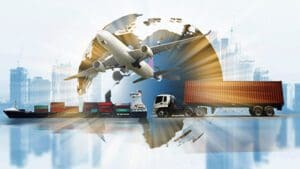 I am working on my latest Transportation Execution and Visibility Systems study, which looks at the total size of the market, the forecasted growth through 2025, and the leading suppliers across a number of categories including industry, region, customer size, and mode. As I mentioned in an earlier post on the growth drivers for the Transportation Management Systems market, transportation visibility tools are one of a number of technologies that are improving performance and helping to reduce freight spend.
I am working on my latest Transportation Execution and Visibility Systems study, which looks at the total size of the market, the forecasted growth through 2025, and the leading suppliers across a number of categories including industry, region, customer size, and mode. As I mentioned in an earlier post on the growth drivers for the Transportation Management Systems market, transportation visibility tools are one of a number of technologies that are improving performance and helping to reduce freight spend.
Visibility solutions are becoming more necessary. The need to know where products are, whether they are on the way to the warehouse, store, or customer, is critical to ensure a positive experience. The rise of visibility solutions at the container level is helping to drive the transportation execution market to new heights.
Real-time visibility tools are often thought of as an over-the-road technology. In this case, the visibility is based on integration to truck carrier’s systems. The carriers in turn are tracking the ELD devices on their trucks or by a downloadable app that the driver puts on his smart phone. There are a variety of external data streams that also play a role in providing better visibility and improved ETAs. Companies are partnering with data aggregators to get a better idea of when shipments will arrive. This includes port data, social media, news, event and weather (SNEW) data, weather data (to some degree), traffic data, and other available sources to provide an accurate ETA to warehouses, stores, and end consumers.
Transportation visibility is clearly not only for trucks. However, the nuances and granularity of the data will vary depending on the mode. Ocean ETAs, for example, are much different because the macro-factors are a lot different than over the road. These include currents and wind speeds, which play a major role in the overall transit times. The majority of ocean shipments go through trans-shipments, or stopovers, meaning that the journey is more than just port to port. The route can easily change based on a variety of factors, but it will still keep the same trans-shipment locations. These changes can add significant time to the ETA.
For over-the-road shipments, getting bumped to the next truck can add a day or two to the overall transit time. For ocean cargo, however, if a shipment gets bumped to the next ship, it can add up to 15 days to the transit time. For ocean cargo, there are multiple sources feeding into ETAs, including the initial Captains ETA as well as ASI data from ship transponders. Ocean visibility takes berthing times, when the container will offload, when it will clear customs, and when it will get to the next part of transport and to a DC into the overall ETA. These factors make ocean ETAs more complex and less granular, when compared to over-the-road.
Air cargo visibility is also becoming a more important aspect of overall transportation visibility. This is due to the limited capacity on trucks and boats as capacity has shrunk and demand has surged. It is a lot harder for many companies to find capacity on boats. The result is air cargo has rebounded to levels that are on par with the pre-Covid economy. Air cargo is also easier for predictive ETAs based on the network and speed of transportation when compared to ocean cargo.
There are a number of technologies that are enhancing transportation visibility systems. The Internet of Things (IoT) is driving interest in the market. For a truer ETA, companies are using IoT data from trucks to get a better understanding of driver behavior, such as typical driving speeds and times, as well as how they operate in heavily congested areas. Companies can take sensor data from trucks and incorporate hours of ser-vice rules to know when, where, and for how long a driver needs to stop. These applications also understand that where and when the driver stops will have an impact on the ETA. This is especially true if drivers stop before a major city and will have to endure rush hour traffic once they start driving again.
Blockchain is important for specific industries. This technology is all about a digital ledger(s) as it applies to a chain of custody. For pharmaceuticals, this is a critical component of transporting goods throughout the supply chain. Most pharmaceutical companies have a small window to get products from point A to B, without any changes in temperature. Blockchain monitors have access to the temperature data and whether that changes between modes. This will be especially important when a COVID-19 vaccine is manufactured and distributed.
Finally, machine learning is becoming increasingly important in transportation visibility systems. The most notable application is generating a more informed and up-to-date ETA for shipments. Machine learning is working with real-time visibility solutions to learn more about constraints (such as capacity, regulations, and hours of service) and then using that information to give a much better ETA for shipments to warehouses, stores, and end customers.

















